Are you a Quiet Speculation member?
If not, now is a perfect time to join up! Our powerful tools, breaking-news analysis, and exclusive Discord channel will make sure you stay up to date and ahead of the curve.
Hot on the heels of my practical examination last week, it's time to formally close the books on the old metagame. Or at least that expression of the old metagame. Who knows how Kaldheim will actually affect Modern, but regardless, the old metagame will see turmoil and change. I expect whatever emerges from Kaldheim to be similar to the old one, but there's no way to know. So, the only thing I can do is take one last look at the old meta with the January metagame update.
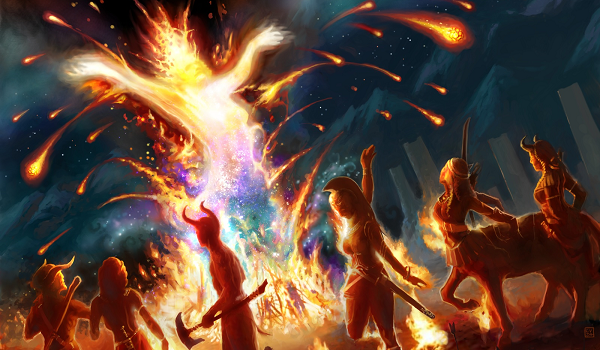
January's data is a little odd. The total decks are down from December, but not by much: January has 552 decks to December's 558. Statistically, that's probably equivalent, but runs counter to my expectations. January included All-Access week and more Premier events than December, so I thought that would bring in more players. It looks like I was wrong. However, the early Preliminaries were especially small, most likely thanks to holiday hangover. A packed last week could have made up for sparse early results. I didn't check; this article requires more than enough data entry as is.
December Metagame
To make the tier list, a given deck has to beat the overall average population for the month. The average is my estimate for how many results a given deck “should” produce on MTGO. To be a tiered deck requires being better than “good enough;” in January the average population was 6.90, meaning a deck needed 7 results to beat the average and make Tier 3. 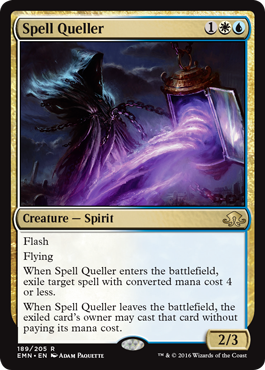 I'll note that this is the lowest threshold I've had so far. Then we go one standard deviation above average to set the limit of Tier 3 and cutoff to Tier 2. The STdev was 11.21, so that means Tier 3 runs to 18, and Tier 2 starts with 19 results and runs to 30. Subsequently, to make Tier 1, 31 decks are required.
I'll note that this is the lowest threshold I've had so far. Then we go one standard deviation above average to set the limit of Tier 3 and cutoff to Tier 2. The STdev was 11.21, so that means Tier 3 runs to 18, and Tier 2 starts with 19 results and runs to 30. Subsequently, to make Tier 1, 31 decks are required.
It's interesting that the lowest threshold is paired with one of the higher STDev's I've had on this project. I'll tip my hand about what's happening in the data by saying that it does make perfect sense. January's data is polarizing, both in terms of its composition and (I predict) how all of you will react. An above-average number of singleton decks placed in January, which dragged down the average. The top placing deck's stats compared to everything else, then pulled the STDev up. And definitely skewed the data.
The Tier List
As mentioned, there were a lot of singletons in the sample, which means that despite the total population being slightly lower than December, January actually recorded more decks. Ten more, to be precise. Of those 80 decks, 22 beat the threshold to make the Tier list. Which is one fewer deck than in December. Which is a little odd, taken together. Again, it makes sense to me since I can see the entire data set and can see all the singletons. That said, it will make more sense to all the readers when I stop stalling and let them read the metagame table already.
| Deck Name | Total # | Total % |
|---|---|---|
| Tier 1 | ||
| 4-C Omnath | 69 | 12.50 |
| Hammer Time | 43 | 7.79 |
| Izzet Prowess | 40 | 7.25 |
| Scourge Shadow | 37 | 6.70 |
| Tier 2 | ||
| Heliod Company | 28 | 5.07 |
| Burn | 26 | 4.71 |
| Tier 3 | ||
| Spirits | 16 | 2.90 |
| Death and Taxes | 16 | 2.90 |
| Amulet Titan | 16 | 2.90 |
| 8-Crab | 15 | 2.72 |
| Rakdos Rock | 15 | 2.72 |
| Ad Nauseam | 13 | 2.36 |
| Sultai Uro | 12 | 2.17 |
| Mono-Red Prowess | 12 | 2.17 |
| Reclaimer Titan | 11 | 1.99 |
| Sultai Rec | 10 | 1.81 |
| Oops, All Spells | 9 | 1.63 |
| Mono-Green Tron | 9 | 1.63 |
| Jund Shadow | 9 | 1.63 |
| Infect | 9 | 1.63 |
| Dredge | 8 | 1.45 |
| Humans | 8 | 1.45 |
So, yeah. 4-Color Omnath was the best deck. Again. And by a lot. It's up four results from even October, but at least then, Rakdos Prowess was keeping up. This is the largest disparity between the top performing deck and runner up since I started doing these regularly. Considering that it's four STDev's over the Tier 1 threshold, it might be fair to consider it Tier 0, but there's an equal chance that this is an outlier result. Remember, there were All-Access Passes available, and 4-C Omnath is an expensive deck. It is probable that a lot of players that couldn't normally play Omnath jumped at the temporary opportunity. The data recorded an uptick in 4-C Omnath results right after the passes were available, though how much of that is attributable to said passes versus there being more big events (where Omnath always shows up in high numbers) is impossible to say.
However, All-Access may go a long way to explaining why Mono-Red Prowess, a very cheap deck, managed to drop from the middle of Tier 1 to mid Tier 3. Regardless of metagame position, players can play the cheap decks anytime. Playing Money Tribal for only $25 won't happen again (maybe)!
A Consistent Narrative
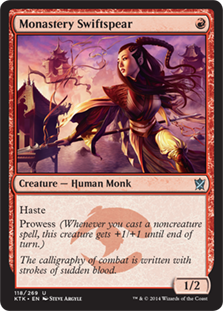 However, there is one thread that I haven't discussed much, and really need to. Only one deck has been Tier 1 in every full-month update: Rakdos Monastery Swiftspear. Initially, it was Rakdos Prowess, but then in October it became Scourge Shadow. However, the central strategy of discard, burn, and Lurrus of the Dream-Den remains unchanged. It was a high performer before the companion nerf came down too. While Uro, Titan of Nature's Wrath has been getting all the press, rage, and general attention, Rakdos decks have performed better over a longer period. To the point that I'm willing to say that they're the real Best Deck in Modern. 4-C Omnath performs better, but it's clearly being helped by broken cards, and will likely see a ban at some point.
However, there is one thread that I haven't discussed much, and really need to. Only one deck has been Tier 1 in every full-month update: Rakdos Monastery Swiftspear. Initially, it was Rakdos Prowess, but then in October it became Scourge Shadow. However, the central strategy of discard, burn, and Lurrus of the Dream-Den remains unchanged. It was a high performer before the companion nerf came down too. While Uro, Titan of Nature's Wrath has been getting all the press, rage, and general attention, Rakdos decks have performed better over a longer period. To the point that I'm willing to say that they're the real Best Deck in Modern. 4-C Omnath performs better, but it's clearly being helped by broken cards, and will likely see a ban at some point.
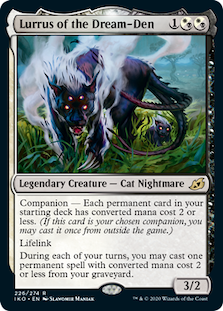 What Rakdos' quiet dominance means for Modern is unclear. This is an eminently beatable deck, and it's never been at the top of the population or power tiers. Nor does it consistently overperform on the average power ranking. But it just hangs in there. In my watchlist, I mentioned that Lurrus/Mishra's Bauble was potentially a problem, and should be scrutinized. The combo is very widespread and was the defining aspect of Modern's metagame in 2020. I don't think that Scourge Shadow warrants a ban any more than Grixis Death's Shadow ever did. However, the fact that it really was the defining deck of 2020 and is continuing to hang in Tier 1 despite 4-C Omnath's power is saying something. Is it too much?
What Rakdos' quiet dominance means for Modern is unclear. This is an eminently beatable deck, and it's never been at the top of the population or power tiers. Nor does it consistently overperform on the average power ranking. But it just hangs in there. In my watchlist, I mentioned that Lurrus/Mishra's Bauble was potentially a problem, and should be scrutinized. The combo is very widespread and was the defining aspect of Modern's metagame in 2020. I don't think that Scourge Shadow warrants a ban any more than Grixis Death's Shadow ever did. However, the fact that it really was the defining deck of 2020 and is continuing to hang in Tier 1 despite 4-C Omnath's power is saying something. Is it too much?
Old Friends Return
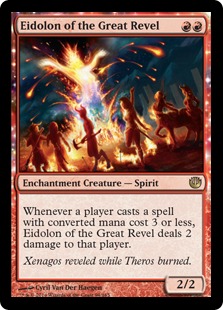 On that note, January also saw a lot of decks return. And for no perceivable reason. Izzet Prowess had fallen off massively, going from the top deck of August to mid-Tier 3 in December. Now, it's the third-most played deck in Modern. I can't explain any of that variation. The overall format doesn't look more inviting now than December or August, so maybe players just starting remembering it existed?
On that note, January also saw a lot of decks return. And for no perceivable reason. Izzet Prowess had fallen off massively, going from the top deck of August to mid-Tier 3 in December. Now, it's the third-most played deck in Modern. I can't explain any of that variation. The overall format doesn't look more inviting now than December or August, so maybe players just starting remembering it existed?
Which may also explain why Burn came back. Burn's been banging around the bottom of Tier 3 since the companion nerf, before which it was one of the best decks. And most Burn lists look just like their pre-companion configurations, which is more perplexing. Some do have Lurrus, but only as a free-roll companion. No Baubles, only one Seal of Fire that I've seen. So unless Eidolon of the Great Revel and Skullcrack are suddenly better than they were a month ago (unlikely; the metagame composition is too similar), then I have no idea how it shot up to Tier 2.
Power Rankings
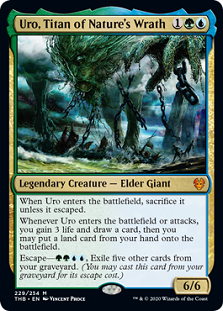 Tracking the metagame in terms of population is standard practice. However, how do results actually factor in? Better decks should also have better results. In an effort to measure this, I use a power ranking system in addition to the prevalence list. By doing so I measure the relative strengths of each deck within the metagame. The population method gives a decks that consistently just squeaks into Top 32 the same weight as one that Top 8's. Using a power ranking rewards good results and moves the winningest decks to the top of the pile.
Tracking the metagame in terms of population is standard practice. However, how do results actually factor in? Better decks should also have better results. In an effort to measure this, I use a power ranking system in addition to the prevalence list. By doing so I measure the relative strengths of each deck within the metagame. The population method gives a decks that consistently just squeaks into Top 32 the same weight as one that Top 8's. Using a power ranking rewards good results and moves the winningest decks to the top of the pile.
One problem that's been lingering over the power system finally came to a head in January. I've been almost exclusively working with two event types so far, Preliminaries and Challenges. The system of points for preliminary record and placement for challenges worked well for those events. However, I had to confront all the Super Qualifiers and other Premier events in January. Technically, I've had some before in November, but what nobody clued me into was the size disparity between Challenges and Super Qualifiers. A Challenge rarely has more than 200 players, with under 100 being more typical. The Super Qualifiers were all over 300, and the Showcase events were similar. 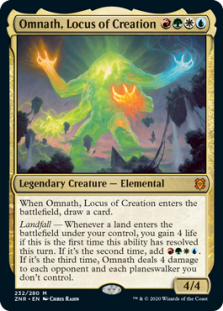 Saying that Challenges are worth the same as a Super Qualifier is facetious, and I had that driven home by participating in one. So, I've revised the power system.
Saying that Challenges are worth the same as a Super Qualifier is facetious, and I had that driven home by participating in one. So, I've revised the power system.
Starting this month, and with an eye to how I'll make it all work once paper comes back, I'm adding more points to larger events. Preliminaries will still award points for record (1 for 3 wins, 2 for 4 wins) and Challenges will be scored 3 points for Top 8, 2 for Top 16, 1 for Top 32. However, Super Qualifiers and similar events get an extra point if they're over 200 players, and another one for over 400. Thus, we had one event this month award five points and several award 4. This system is entirely provisional, so if you have any suggestions, I'm open to feedback!
The Power Tiers
The first result of this change is that the data looks more like it did in November before Wizards (apparently arbitrarily) cut a round from Preliminaries. The average points in January were up thanks more to extra events happening than the new scoring system, from 873 to 1017. The average points were 12.71, so 13 makes Tier 3. The STDev was 22.37, the highest it's ever been, so Tier 3 runs to 25 points. Tier 2 starts with 26 points and runs to 48. Tier 1 requires at least 49 points. The number of decks expanded from 22 to 24, and that was a true expansion because no deck fell off from the population list.
| Deck Name | Total # | Total % |
|---|---|---|
| Tier 1 | ||
| 4-C Omnath | 145 | 14.26 |
| Hammer Time | 84 | 8.26 |
| Izzet Prowess | 80 | 7.87 |
| Scourge Shadow | 68 | 6.69 |
| Tier 2 | ||
| Heliod Company | 46 | 4.52 |
| Burn | 45 | 4.42 |
| Spirits | 35 | 3.44 |
| Amulet Titan | 30 | 2.95 |
| 8-Crab | 30 | 2.95 |
| DnT | 29 | 2.85 |
| Ad Nauseam | 27 | 2.65 |
| Tier 3 | ||
| Mono-Red Prowess | 21 | 2.06 |
| Rakdos Rock | 20 | 1.97 |
| Sultai Uro | 19 | 1.87 |
| Reclaimer Titan | 19 | 1.87 |
| Sultai Rec | 18 | 1.77 |
| Oops, All Spells | 17 | 1.67 |
| Mono-Green Tron | 16 | 1.57 |
| Dredge | 16 | 1.57 |
| Humans | 16 | 1.57 |
| Jund | 15 | 1.47 |
| Jund Shadow | 14 | 1.38 |
| Infect | 13 | 1.28 |
| Belcher | 13 | 1.28 |
So, yeah. 4-C Omnath absolutely crushed January. It earned far more points than in November, which had more total points, decks, and events. And beat its nearest competition by 61 points, an absurdly large margin. That's a really bad sign for 4-C Omnath's Modern longevity because it reflects 4-C Omnath soaking up all high finishes.
On a more positive note, the overall distribution of points is more level. This means that Tier 2 has tripled in size, and thus reflects the overall picture far better than population did. It also tends to demonstrate that Modern is in a fairly decent place except for that big outlier sitting on top.
Average Power Rankings
Finally, we come to the average power rankings. These are found by taking total points earned and dividing it by total decks, which measures points per deck. I use this to measure strength vs. popularity. Measuring deck strength is hard. Using the power rankings certainly helps, and serves to show how justified a deck’s popularity is.
However, more popular decks will still necessarily earn a lot of points. This is where the averaging comes in. Decks that earn a lot of points because they get a lot of results will do worse than decks that win more events, indicating which deck actually performs better. A higher average indicates lots of high finishes, where low averages result from mediocre performances and high population. Lower-tier decks typically do very well here, likely due to their pilots being enthusiasts. So be careful about reading too much into the results.
The Real Story
When considering the average points, the key is looking at how far-off a deck is from the Baseline stat (the overall average of points/population). The closer a deck’s performance to the Baseline, the more likely it is to be performing close to its “true” potential. A deck that is exactly average would therefore perform exactly as well as expected. The further away the greater the deviation from average, the more a deck under- or over-performs. On the low end, the deck’s placing was mainly due to population rather than power, which suggests it’s overrated. A high-scoring deck is the opposite.
| Deck Name | Average Power | Power Tier |
|---|---|---|
| Jund | 2.50 | 3 |
| Spirits | 2.19 | 2 |
| Belcher | 2.17 | 3 |
| 4-C Omnath | 2.10 | 1 |
| Ad Nauseam | 2.08 | 2 |
| Izzet Prowess | 2.00 | 1 |
| 8-Crab | 2.00 | 2 |
| Dredge | 2.00 | 3 |
| Humans | 2.00 | 3 |
| Hammer Time | 1.95 | 1 |
| Oops, All Spells | 1.89 | 3 |
| Amulet Titan | 1.88 | 2 |
| Scourge Shadow | 1.84 | 1 |
| DnT | 1.81 | 2 |
| Sultai Rec | 1.80 | 3 |
| Mono-Green Tron | 1.78 | 3 |
| Mono-Red Prowess | 1.75 | 3 |
| Burn | 1.73 | 2 |
| Reclaimer Titan | 1.73 | 3 |
| Baseline | 1.71 | |
| Heliod Company | 1.64 | 2 |
| Sultai Uro | 1.58 | 3 |
| Jund Shadow | 1.56 | 3 |
| Infect | 1.44 | 3 |
| Rakdos Rock | 1.33 | 3 |
 Baseline was pretty low this time, but that's again a function of the huge number of singleton decks that only showed up as Prelim 3-1s. The addition of extra points pulled everyone up as well. But on that note, Jund and UW Spirits did better than everyone else! And then there's 4-C Omnath hitting a very high mark, thanks to very good results in the Super Qualifiers. Much higher than Tier 1 decks usually do on this chart. And that's troubling.
Baseline was pretty low this time, but that's again a function of the huge number of singleton decks that only showed up as Prelim 3-1s. The addition of extra points pulled everyone up as well. But on that note, Jund and UW Spirits did better than everyone else! And then there's 4-C Omnath hitting a very high mark, thanks to very good results in the Super Qualifiers. Much higher than Tier 1 decks usually do on this chart. And that's troubling.
I keep meaning to mention, but always forget to, that Heliod Company never does well in terms of average power. It's been popular enough to hang onto Tier 1 until now, but it always underperforms. The best it ever did was its first month in Modern, and even then it was just barely above Baseline. It's a very popular deck, but more than any other deck I've dealt with, that doesn't make it a good deck. I think the popularity is a combination of the allure of its combos and ease of play. Because when I've faced it online, my losses feel like I lost, not that my opponent won. And I've beaten Company far more than I've lost. Its fall to Tier 2 may indicate other players catching onto the deck's secret weakness.
On to the New
And now we wait to see how the metagame will shift with Kaldheim. While the set became legal on MTGO last week, Kaldheim cards only starting appearing in the last two events, and thus was never going to have much of an impact. I'm aware of chatter about Tibalt's Trickery being busted, but I haven't seen it yet. I'll determine that with certainty next month. I will say that Trickery being a thing right now is coincidentally very timely, as you'll all see next week.



